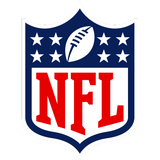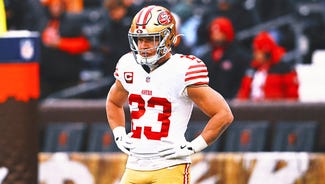
A look at the closing hours of NFL labor talks
The final touches to the deal that ended the lockout came in a phone conversation between Commissioner Roger Goodell and NFL Players Association head DeMaurice Smith on Monday - even as team reps already were holding their pre-vote conference call.
That and other behind-the-scenes details of the closing flurry of activity that led to agreement on a 10-year labor deal were described to The Associated Press by three people familiar with the negotiations. All spoke on condition of anonymity because they were not authorized to reveal the information.
When the owners voted 31-0 on Thursday night to OK what they called ''a comprehensive agreement,'' it drew an angry reaction from some players, who said they had yet to see the full document. Owners had expected players to vote on a tentative pact as early as Wednesday; it didn't happen then - or Thursday or Friday, either.
What brought the deal together was intense negotiating, involving principals and lawyers from both sides. Talks lasted about 12 hours Saturday, even longer Sunday and into the wee hours Monday, when bargaining closed shortly after 3 a.m.
By then, the document was ready to go, and was sent to the NFLPA so its executive committee could review it.
That was possible only because throughout the weekend, lawyers spoke via teleconference and emailed draft after draft of the contract back and forth. Smith and Goodell talked on the telephone 1-on-1; they also held conversations that occasionally included an owner or a player.
One of the final issues - if not THE final issue - was the players' wish to add an opt-out clause. They knew that the old collective bargaining agreement, which originally was supposed to run from 2006-12, expired this March because the owners exercised an opt-out clause in 2008. Eventually, though, the players were willing to drop that demand.
One of the people who spoke to the AP said the opt-out clause was the only issue he worried might be able to stand in the way of a deal being closed Monday.
Other issues that were resolved during the weekend's marathon sessions included minimum amounts of cash that each team would need to spend, the amount of time the NFLPA would have to re-establish itself as a union, and injury protection benefits.
Mainly, though, the ultimate agreement was not all that different from what the sides had arrived at more than a week ago, when all the main economic elements were put in place.
A significant, game-changing concept was an agreement to divide revenue at different rates depending on what it would cost owners to generate that money. So, for example, the final deal gives players 55 percent of revenue from the league's national media deals, 45 percent of licensing and national sponsorship deals and 40 percent of local club revenues.
Another important moment came when Goodell picked up the phone to call Smith in April with an idea for how to change the dynamic of the negotiations, which had broken down March 11.
Goodell proposed face-to-face talks among owners and players - without the presence of lawyers all the time. Eventually, the sides arranged a series of secret meetings in Illinois, Massachusetts, Maryland and New York in late May and early June.
''We had disagreements, but it was always professional. At the end of the day, I think the fact that they continued to communicate, kept trying to find a common goal, I think that was a real positive,'' Green Bay Packers CEO Mark Murphy said Monday. ''I think another thing that was a real key, I think, throughout the whole process, was when we kicked the lawyers out. Not to make fun of lawyers, but getting the principals involved ... I think really helped move the process along at a time when it looked like we were really at a stalemate.''
---
AP Sports Writer Chris Jenkins in Milwaukee contributed to this report.










